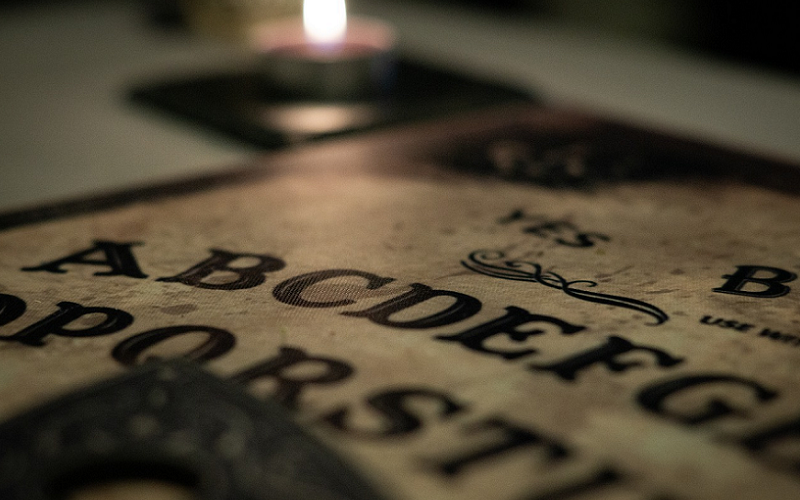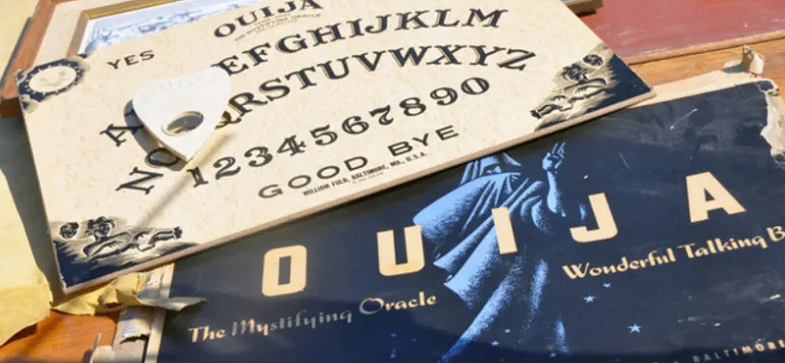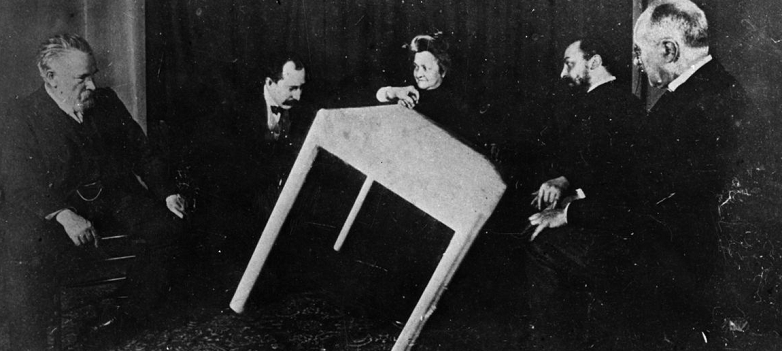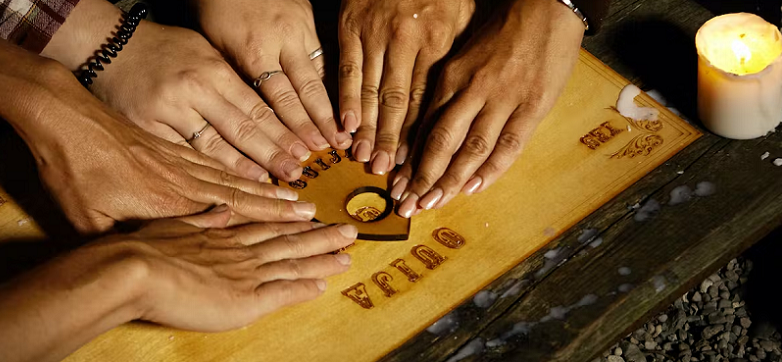
For over a century, Ouija boards have captivated and mystified people with their ability to supposedly communicate with the supernatural. Although they are now a staple of pop culture, their origins lie in the spiritualism movement of the 19th century. Here we explore the strange and fascinating history of Ouija boards, tracing their evolution from a tool for communicating with the dead to a commercialized product and a cultural icon.
What Are Ouija Boards?
Ouija boards are a type of board game that is said to have the ability to communicate with the dead and spirits. The board is typically rectangular and features letters, numbers, and other symbols on its surface. It comes with a planchette, which is a small triangular or heart-shaped device that is placed on the board and used to spell out messages from spirits.
To use a Ouija board, participants place their hands on the planchette and ask questions out loud. The planchette moves around the board, spelling out words or providing yes or no answers. Ouija boards are often associated with the paranormal, with many people believing that they can contact the dead or communicate with spirits.
The history of Ouija boards dates back to the 19th century, when Spiritualism was a popular movement. The boards gained popularity in the early 20th century, with many people using them as a form of entertainment. Over the years, Ouija boards have become a commercialized product and a staple of pop culture, with their use often depicted in horror movies and TV shows.
Despite their popularity, Ouija boards have also attracted controversy and criticism. Some religious groups have opposed the use of Ouija boards, claiming that they are a tool of the devil. Others have accused the boards of being a hoax, with the movements of the planchette attributed to the subconscious movements of the participants.

Spiritualism and the Birth of Ouija Boards
The birth of Ouija boards can be traced back to the rise of the Spiritualism movement in the 19th century. Spiritualism was a popular belief system that held that the dead could communicate with the living. The movement gained popularity in the wake of the Civil War, as many people sought comfort and closure from the loss of loved ones.
One of the key elements of Spiritualism was the use of mediums, who claimed to be able to communicate with the dead. Mediums would often use various tools to aid them in their communication, including planchettes, or small devices that were used to spell out messages from spirits.
The planchette was invented in the mid-19th century, and quickly became a popular tool among Spiritualists. It consisted of a small board or platform on wheels, with a pencil attached to the bottom. The medium would place their hands on the planchette and allow it to move around the board, spelling out messages from the spirit world.
In 1890, businessman Elijah Bond and lawyer Charles Kennard decided to capitalize on the popularity of planchettes and create a new device for communicating with the dead. They came up with the idea of a board game that would combine the planchette with a board featuring letters and numbers.
The resulting device was the Ouija board, which quickly became a popular tool among Spiritualists and others interested in communicating with the dead. The board’s popularity only grew in the early 20th century, as many people began to use it as a form of entertainment.

Ouija Boards in Popular Culture
Ouija boards have had a significant impact on popular culture since their inception in the 19th century. In the early 20th century, the boards became a popular form of entertainment, with many people using them as a way to communicate with the dead or spirits.
Over time, Ouija boards have become a cultural icon, featured in numerous movies, TV shows, and other media. They are often depicted in horror movies, where they are used as a tool for summoning evil spirits or demons.
One of the most famous depictions of Ouija boards in popular culture is the 1973 horror movie “The Exorcist.” The movie featured a young girl who becomes possessed by a demon after using a Ouija board. The movie was a massive success and helped cement the Ouija board’s reputation as a tool for summoning evil spirits.
Since then, Ouija boards have been featured in numerous horror movies and TV shows, including “The Conjuring,” “Witchboard,” and “Supernatural.” They have also been referenced in popular music, with bands like the Talking Heads and Fleetwood Mac featuring Ouija boards in their lyrics and album artwork.
Despite their association with the paranormal and horror movies, Ouija boards continue to be a popular form of entertainment. They are still sold in toy stores and have even been used in reality TV shows and other forms of media. Whether used for serious communication with the dead or as a lighthearted party game, Ouija boards remain a fixture of popular culture.

Ouija Board Controversy, Criticism, and Opposition
Despite their popularity, Ouija boards have been the subject of controversy, criticism, and opposition. One of the primary sources of opposition comes from Christian groups, who believe that Ouija boards are a tool of the devil. They argue that the boards open up a doorway to evil spirits and demons, and that they can be used to summon dangerous entities.
Claims of demonic possession have also been associated with Ouija boards. Many people believe that using the boards can lead to possession or other negative spiritual consequences. These claims have been widely criticized, however, with many experts arguing that there is no scientific evidence to support them.
Skeptics and critics of Ouija boards also argue that the movements of the planchette are due to the subconscious movements of the participants, rather than communication with the dead or spirits. They argue that the participants may be unknowingly moving the planchette, and that the messages spelled out by the board are not genuine.
Despite these criticisms, Ouija boards remain popular among many people who believe in their ability to communicate with the dead or spirits. Some people view them as a harmless form of entertainment, while others take them more seriously and use them as a tool for spiritual exploration. Regardless of one’s beliefs about the boards, the controversy and criticism surrounding them continue to spark debate and discussion.
